Rib or Meat Side Up When Roasting Baby Back Ribs
In this article, we concentrate on comparing spare ribs to baby back ribs. Because as discussed in our companion guide, there are a few different types of pork ribs, and it pays to know the differences between them.
The love of smoked and barbecued ribs is as close to universal as you'll get with just about any kind of meat. Perhaps only bacon rivals ribs for capturing hearts.
Just think about how many "ribfests" happen every year. Think about the competitive smokers who churn out nothing but smoky, sticky stacks of racks. Then there are the restaurants, stands, and food trucks that specialize in ribs. Even the McRib, for crying out loud!
You're here because you love ribs. But how well do you know them? In this edition of a series of articles showcasing ribs, we're getting to the bottom of a bone-sucking good mystery: what's the difference between spare ribs and baby back ribs?
Keep reading to learn their histories, where they come from, how to prepare them, and how to smoke them just right. Plus, we'll connect you with three drool-worthy recipes for each kind. Next stop, rib central.
Contents (Jump to Topic)
- 1 Comparison Table
- 2 Spare Ribs Overview
- 2.1 Where on the Pig They Come from
- 2.2 How Much Meat and Fat do They Contain?
- 2.3 Nutritional Information Per 4oz (1/4 Pound)
- 2.4 Portion Size: How Many Spare Rib Ribs Per Person
- 2.5 How to Prepare Spare Ribs for Smoking
- 2.6 How to Cook Spare Ribs in a Smoker
- 3 Three Excellent Spare Rib Recipes from Around the Web
- 3.1 Not Your Everyday Smoked Pork Spare Ribs
- 3.2 Memphis-Style Pork Ribs
- 3.3 Smokey BBQ Pepper Jelly Pork Ribs
- 4 Baby Back Ribs
- 4.1 Where on the Pig They Come from
- 4.2 How Much Meat and Fat do They Contain?
- 4.3 Nutritional Information Per 4oz (1/4 Pound)
- 4.4 Portion Size: How Many Baby Back Ribs Per Person
- 4.5 How to Prepare Baby Back Ribs for Smoking
- 4.6 How to Cook Baby Back Ribs in a Smoker
- 5 Three Excellent Recipes from Around the Web
- 5.1 Huli Huli Ribs
- 5.2 Hickory Smoked/Bbq Baby Back Ribs
- 5.3 Smoked Baby Back Ribs
- 6 Final Thoughts
Comparison Table
| Spare Ribs | Baby Back Ribs | |
|---|---|---|
| Size | Medium length rack/long ribs | Long rack/short ribs |
| Meat content | Very meaty | Moderately meaty |
| Fat content | High fat | Low fat |
| Average weight (rack) | 3 – 4 pounds | 1.5 – 2 pounds |
| Servings per rack | 4 – 5 | 2 – 3 |
| Location on pig | Bottom of the rib cage at the belly | Where ribs join the spine |
Spare Ribs Overview
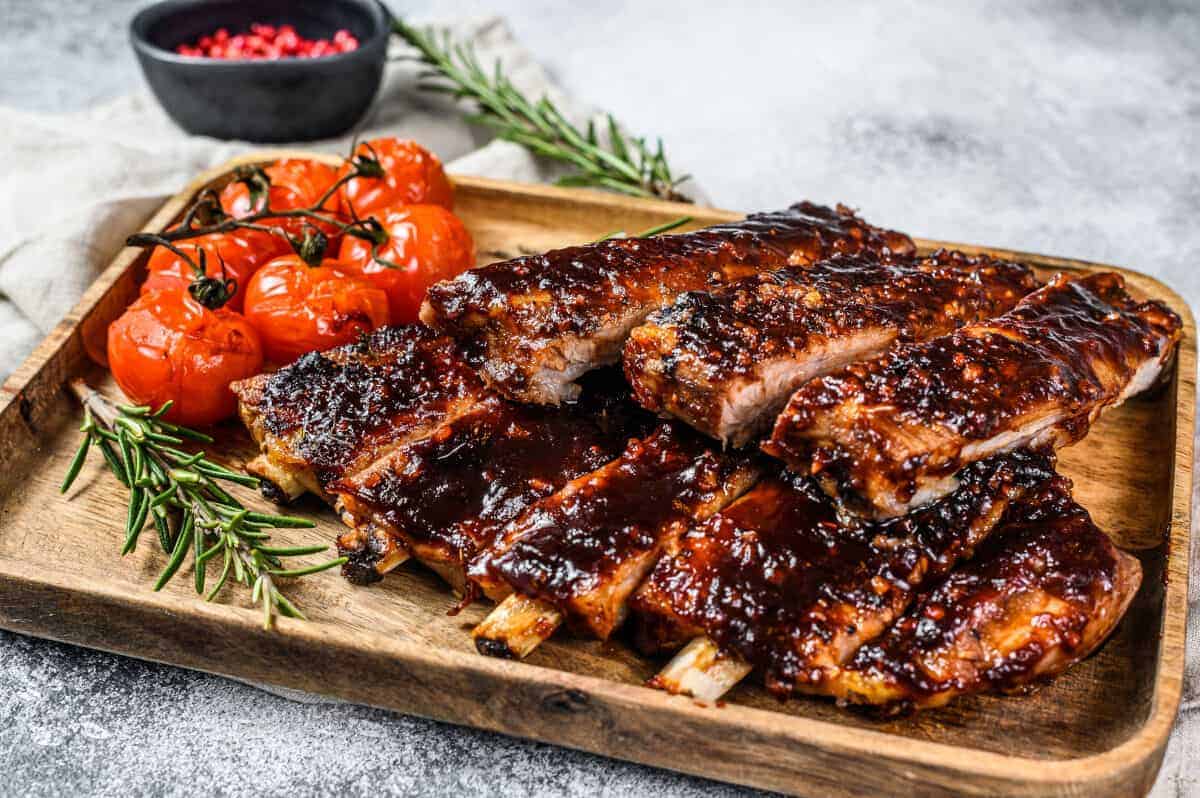
"Best bang for your buck is going to be spare ribs, as they have the most meat of all." – Jess Pryles
Spare ribs are the big daddies of pork ribs. They're very long, very heavy, and very meaty. As such, they're popular with pitmasters, though they can be a lot to manage for some home smokers. You'll sometimes hear them referred to as just "spares" or "side ribs" because they extend up the sides of the pig.
Spare ribs cook up juicy, and there's a lot to sink your teeth into. They're rich and flavorful, too, though spares can be more difficult to eat than other cuts, thanks to all the extra bits and pieces.
Where on the Pig They Come from
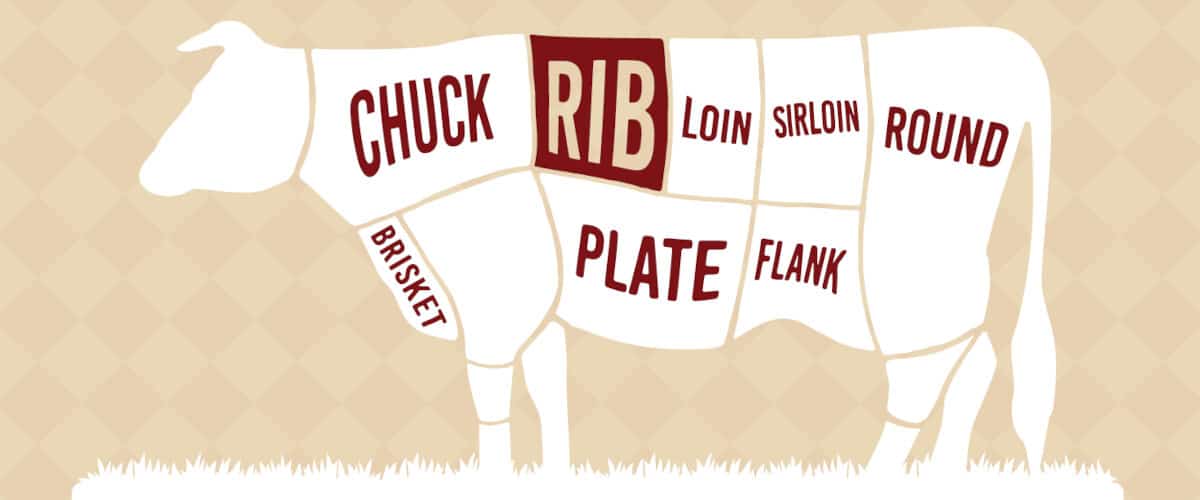
Spare ribs come from the sides and bottom of the rib cage. They begin where the baby backs end and extend right down to the breastbone.
Spares are easy to recognize by their large size and irregular shape. Typically, there are 11 bones to a rack. An untrimmed rack of spare ribs also features a flap of meat called the skirt.
How Much Meat and Fat do They Contain?
Spare ribs are the fattiest of the rib cuts, but they can also be the meatiest, especially between the bones. Don't be put off by the fat, though. Some of it you'll want to trim off, but what you leave behind will add flavor and tenderness to your finished ribs.
Nutritional Information Per 4oz (1/4 Pound)
| Nutrition | Total Amount | % Daily Value (based on 2000 calories/day) |
|---|---|---|
| Calories | 230 | |
| Total Fat | 16 g | 25% |
| Cholesterol | 70 mg | 23% |
| Sodium | 90 mg | 4% |
| Protein | 17 g | |
| Calcium | 0% | |
| Iron | 4% |
Portion Size: How Many Spare Rib Ribs Per Person
Although the rack is quite large, you'll probably get two good servings of about 5 ribs per person. If your meal includes a lot of sides, cut back to 4 each.
How to Prepare Spare Ribs for Smoking
You could, in theory, unpack your spare ribs and toss them in the smoker. But, you're missing half the fun and at least half the flavor by doing so.
If there are any large chunks or flaps of fat sticking out or strands of sinew, slice them off. They won't add anything useful to your ribs, like flavor or moisture. What they will do, though, is burn and char. No thanks!
An untrimmed rack of spares has a thin membrane covering the bone side. Although some rib joints and pitmasters leave it on, we prefer taking it off. This makes separating the bones a little easier and allows the flavor and smoke to penetrate from both sides.
Get a sharp paring knife and slide the blade between the membrane and the first bone on the rack. (Or the last, depending on how you look at it). With short strokes, separate the membrane from the bones until it starts to lift off. Be careful not to cut away any of the precious meat! Once you've got a bit of a flap created, you should be able to grab it with your fingers and pull it away from the rack.
With the membrane gone, now's the time to start building your flavor profile. If you're going to brine or marinate your ribs, seal them into a locking bag or container and let the liquid do its thing.
If you're skipping straight to the spice rub, you can apply it now, right before it hits the smoker rack.
How to Cook Spare Ribs in a Smoker
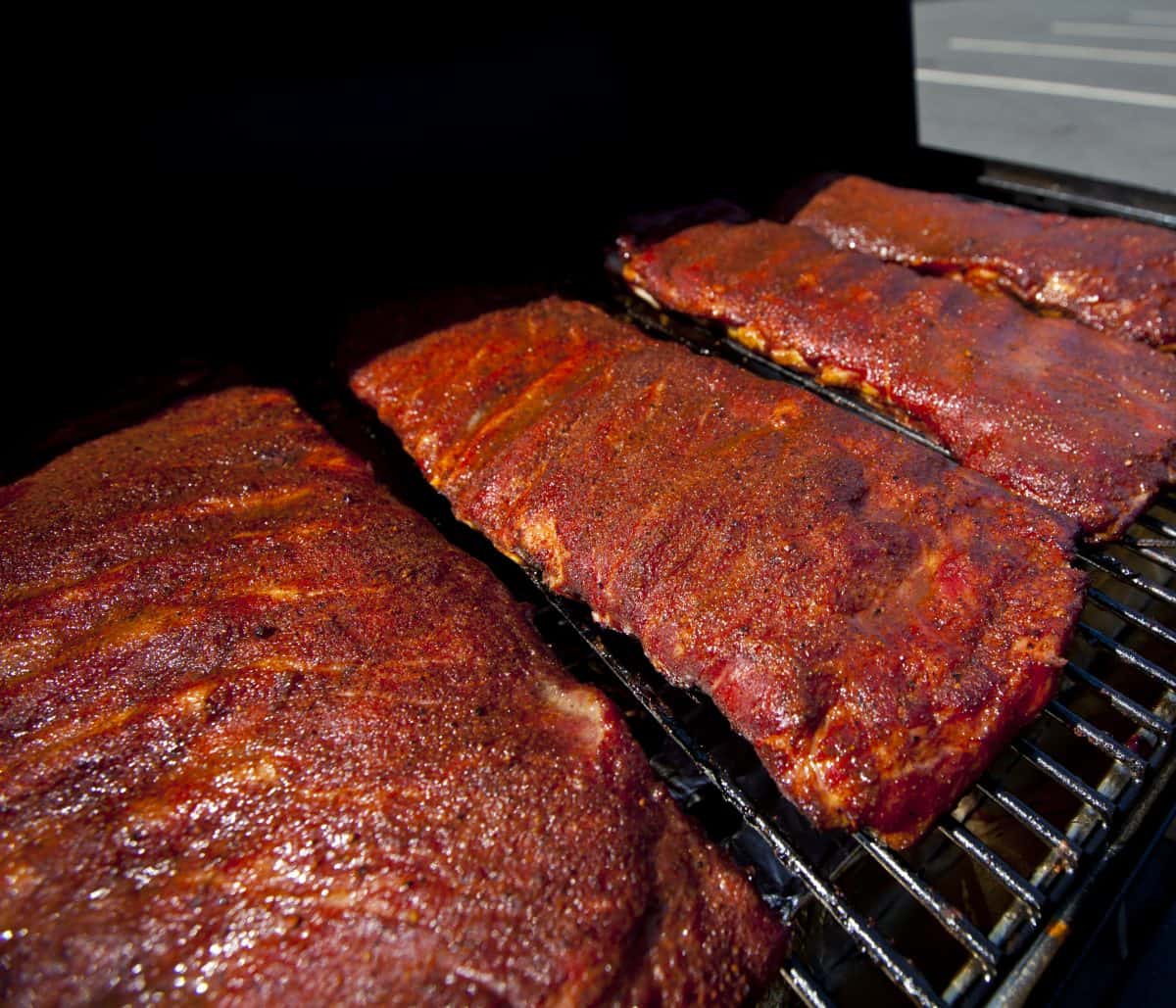
Recipes vary; smoker techniques, not so much. Here are the basics you need to know for smoking spare ribs.
Set your smoker to 250F and set aside up to 6 hours of your day. Wood choice is a matter of personal preference, but the most common choices are hickory and mesquite, maple, apple, or cherry for a sweeter profile.
Likewise, whether or not to wrap your ribs partway through the session is up to you. Having said that, most pros opt to wrap their ribs to nail down the tenderness and let the flavor of the rub really penetrate.
One of the most common methods used for cooking spare ribs is the "3-2-1" system. It's easy to do; smoke for three hours unwrapped, follow with two hours wrapped, and finish with one hour unwrapped with the heat turned up a bit. This method should give you the best of everything: smoke exposure, retained moisture, and a deep bark.
During the last hour or so of your smoke is the time to apply any sauce you're using. Putting it on earlier will likely cause it to burn, and no one likes burnt BBQ sauce.
You'll know your ribs are ready when you can see the meat has pulled away from the ends of the ribs, and there's about a half-inch of exposed bone.
Three Excellent Spare Rib Recipes from Around the Web
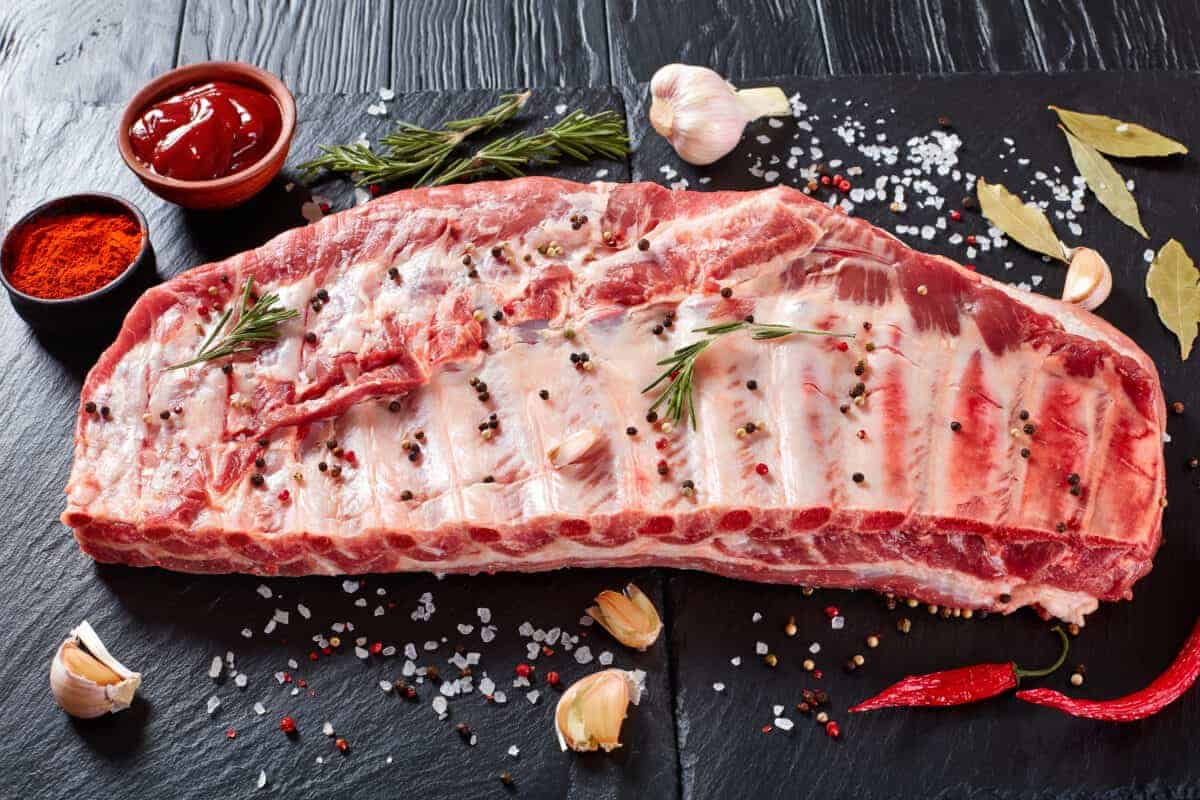
We've scoured the internet on your behalf and come up with these mouth-watering spare rib recipes for your smoker.
Not Your Everyday Smoked Pork Spare Ribs
No, these are certainly not! Combining a rub and a mop sauce, you'll get the best of both on these ribs. The rub doesn't stray far from the tried-and-true: chili powder, paprika, etc. Where it gets interesting is when you add the cinnamon and jalapeño seasoning salt! There's more jalapeño in the mop sauce, along with hot pepper sauce and apple cider.
The rub sits and soaks in up to overnight, and they'll spend 4 hours in the smoke. The end results are fall-off-the-bone tender with a crispy bark. There's a dash of sweetness and a fair bit of heat. You can adjust the jalapeño to taste: take it out and leave just a bit of zing, or crank it up for some fire with your smoke.
Follow the link for the full recipe and instructions.
Memphis-Style Pork Ribs
There are all kinds of regional styles when it comes to cooking ribs, and Memphis-style just happens to be one of the most famous. These are "dry" ribs in the sense that there's no sauce — but they're anything but dry! Instead, the fat breaks down into succulent moisture, and the rub provides all the extra flavor you could ask for.
Paprika and cayenne bring some peppery heat to the rub, but there's brown sugar, too, so it's not like ordering those wings you have to provide proof of age for. The secret to the intense flavor is letting the rub sit on the ribs for hours, or even overnight if you've got time. After that, it's all about slow cooking and a lot of patience.
If the idea of ribs without sauce sounds divine, head to this Memphis style pork rib recipe.
Smokey BBQ Pepper Jelly Pork Ribs
This is kind of a two-for-one recipe… in the sense that you'll have to make two separate recipes to enjoy the finished ribs. It's totally going to be worth the effort, of course, but we've provided a short-cut if you want to save some time.
There's not much to the first part of making these ribs. Basically, you rub them all over with your favorite BBQ spice mix. Either use your own secret blend or try a pre-made, store-bought rub. The magic happens near the end of the smoke when you paint them all over with Sweet Hibiscus Pepper Jelly and let it cook into a glaze.
Don't want to make the jelly? No problem – buy any sweet pepper jelly you like from the grocery store and go with that.
We've got links to both recipes right here:
- Smoked pepper jelly pork ribs recipe
- Pepper jelly recipe
Baby Back Ribs
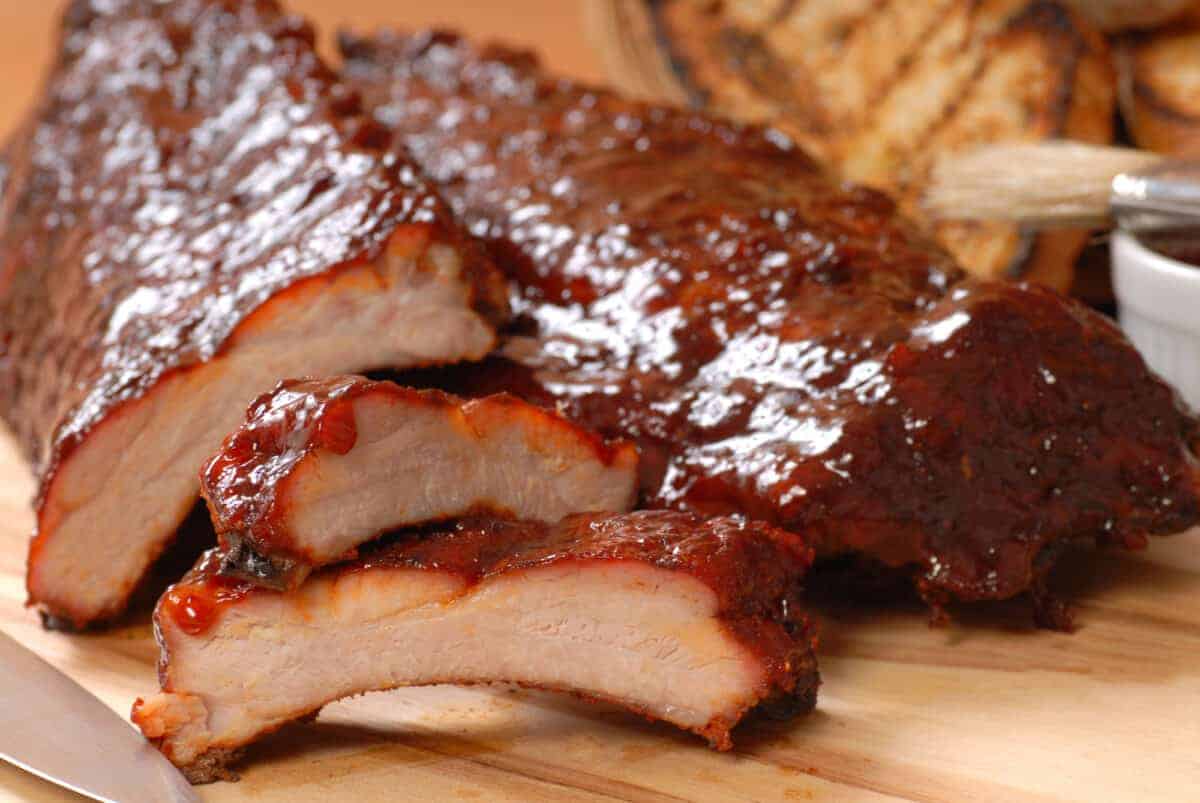
"If ribs epitomize barbecue for most Americans, the baby back epitomizes ribs." – Steven Raichlen
You'll find these ribs going by many names: back ribs, pork loin back ribs, loin ribs, and even Canadian back ribs. They're all the same thing, but let's face it – "baby back" just rolls off the tongue better. Marketing guys for the win.
Like all ribs, baby backs were once discarded because no one wanted them, and they were difficult to pack. It took the miracle of refrigeration to make shipping ribs practical, and even then, they took some time to catch on. It was in the American Midwest that BBQ rib stands first started to pop-up.
Restaurants today love baby back ribs because they cook quickly and fit nicely on a plate thanks to their smaller size. Customers love them because they're easy to handle, and they're super tender; you can usually strip away every last bit of meat with your teeth and leave nothing but a clean bone behind.
Where on the Pig They Come from

As the none-too-clever name suggests, baby back ribs come from the part of the rib cage closest to the spine. Unlike what the name suggests, though, they do not come from baby pigs. Baby back ribs are easily identifiable by their short bones and their gentle curve. Expect to get about 14 ribs on a rack.
How Much Meat and Fat do They Contain?
Because they're away from the pig's chunky mid-section, baby backs are leaner than spares, and there's less cartilage and not so much connective tissue. There's also less meat than lower down on the ribs, but the compensation is baby backs are very tender — remember: these are cut from the same neighborhood as the loin.
Nutritional Information Per 4oz (1/4 Pound)
| Nutrition | Total Amount | % Daily Value (based on 2000 calories/day) |
|---|---|---|
| Calories | 250 | |
| Total Fat | 18 g | 28% |
| Cholesterol | 75 mg | 25% |
| Sodium | 95 mg | 4% |
| Protein | 21 g | |
| Calcium | 4% | |
| Iron | 4% |
Portion Size: How Many Baby Back Ribs Per Person
Plan for about 6 ribs per adult diner, or about ½ pound. If you've got other meat, reduce to perhaps 4 ribs each. You know — or don't.
How to Prepare Baby Back Ribs for Smoking
Pretty much the same process here as for spare ribs. The only difference is they're curved, so you may have a bit more difficulty removing the membrane. If you skipped right to the baby back ribs section, scroll back up to spare ribs to learn what you need to do.
How to Cook Baby Back Ribs in a Smoker
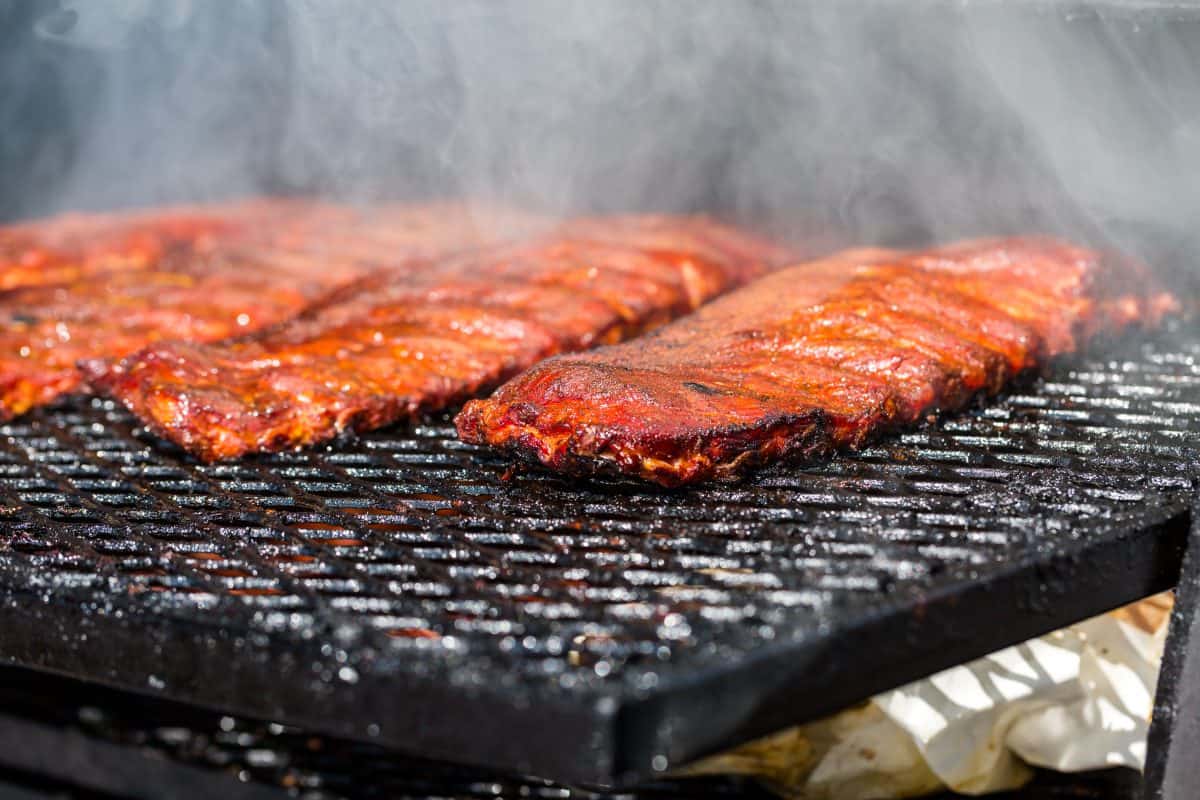
We've got recipes coming up, but first, here's the skinny on how to cook the best baby back ribs.
Aim for 225F for a little extra 'low' in your 'low 'n' slow'. They won't take as long to cook as spares thanks to their smaller size and lower meat content. You don't want to overcook these little morsels!
When it comes to wood selection, you can go with basically anything you like, but be sure it suits the style of ribs you're making. For example, if you'd choose mesquite or hickory for a Southern U.S. vibe. To compliment a sauce that's sweet and fruity, try cherry or pear.
If you've been making ribs for a while, or just doing your research, you've come across the wrap-or-don't-wrap debate. There are good arguments to be made for both sides. Around here, we're firm believers in wrapping baby backs in foil for part of the smoke session to hold in that moisture. With lower fat content than spares, it helps keep them tender and juicy.
Of course, wrapping is an essential step in the "3-2-1" method many ribbers swear by. This system charts a 6-hour smoke session. Start with 3 hours unwrapped over low heat, follow with 2 hours wrapped, and then unwrap and turn up the heat a bit for the final hour.
Because baby backs are more "delicate" than spare ribs, it's best to go with a modified version of 3-2-1. We recommend 2-1-1 for great results, though there are a few cooks out there who prefer 2-1-0.5. The idea is the shorter cook time will prevent overcooking.
Three Excellent Recipes from Around the Web
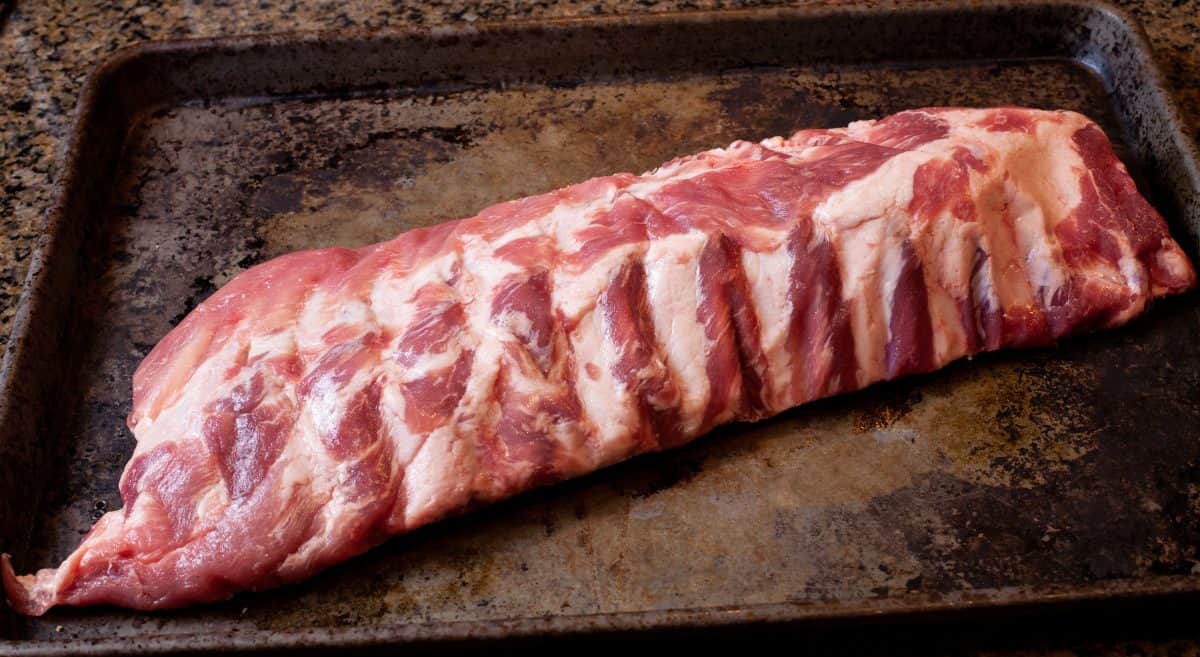
Searching for recipes online takes you away from the things you really love. Like eating more ribs. Here are three smokin' good recipes for baby backs we've collected for you.
Huli Huli Ribs
Low 'n' slow barbecue is part of the fabric of Hawaiian culinary culture. So, it only makes sense we offer up this island-inspired rib recipe. They lean way to the sweet and fruity side, featuring pineapple juice and chunks, plus sherry and honey. Don't worry, seasoning buffs — there's ginger and Sriracha, too.
Smoked over mesquite for four-plus hours, the end results are strip-the-bones-clean-and-lick-your-fingers good. It's not a difficult recipe to make, despite the custom marinade, and it just screams out summer days in the yard. This recipe includes instructions for both the grill and the smoker.
Want to try? Get the complete recipe here.
Hickory Smoked/Bbq Baby Back Ribs
This recipe combines two of our favorite techniques: smoking and brining. Brining is the process of immersing meat in saltwater to pump up the flavor and tenderness. If you want to know more about it, here's our Complete Guide.
But there's more than brining to this recipe. You'll also make a glorious rub out of garlic, basil, oregano, and other herbs. It's kind of a Mediterranean take on a rib rub, and it's a tasty change from the usual rubs and sauces we see. As a bonus, you've probably got most of the ingredients in your cupboard already.
Click here for the full ingredients list and instructions.
Smoked Baby Back Ribs
Well, no prize for originality as far as the name goes. The flavor, however, is another story. You start with a spiced-up rub, including cayenne, paprika, and cumin; think pleasant, lip-tingling heat, not sign-a-waiver-before-you-take-a-bite heat.
Then comes the crazy sauce. Some of the usual suspects are in there (including the BBQ sauce of your choice), but there's also honey and purple grape juice. Whaaaat? The whole concoction turns into a saucy glaze for some sweet and tangy vibes on your spicy ribs. There's a lot of flavor happening here, and they really deserve a better name than this.
Check out the full run-down here — and just ignore the oven instructions: Smoked baby back ribs recipe.
Final Thoughts
Have you decided which rack will be next in your smoker? It's not an easy decision — they both offer meat lovers plenty to love. Some people base the decision on a rub vs. sauce basis. If you prefer ribs with more seasoning than gooey sauce, you might prefer the stronger flavor of spare ribs. But, if licking extra BBQ sauce off your fingers is your jam, smoke up the baby backs and slather it on.
If you have any thoughts on ribs you want to share, or if you've got questions that need answers, drop us a line via email or the handy form below. Also, try the search bar and use it to scan the site; the answers may already be waiting for you. Don't forget to tell your friends about us — and become our friend by joining us on social.
Thanks for including us as a stop on your road to rib nirvana.
Rib or Meat Side Up When Roasting Baby Back Ribs
Source: https://www.foodfirefriends.com/spare-ribs-vs-baby-back-ribs/
0 Response to "Rib or Meat Side Up When Roasting Baby Back Ribs"
إرسال تعليق